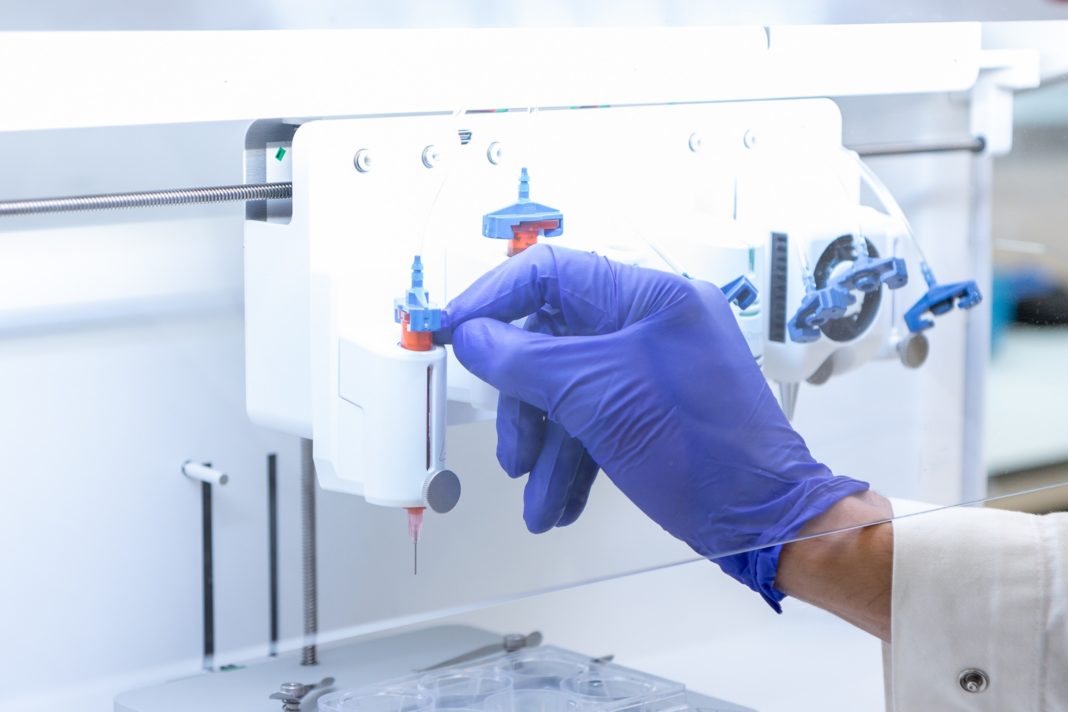Next generation medical technologies with the potential to transform NHS treatments for conditions such as osteoarthritis are being held back by over-complicated regulations and high costs, a leading academic has warned.
Almost nine million people in the UK are affected by osteoarthritis where the cartilage between bones – most commonly the knees and hips – is worn away, causing the joint to become painful and swollen.
The Bioprinting Technology Platform in the Henry Royce Institute at The University of Manchester is examining ways to improve patient outcomes by 3D printing new cartilage made from the patient’s cells in combination with advanced biomaterials. This strategy, known as bioprinting, seeks to stimulate the body’s own regenerative capacity to restore rather than repair or replace the damaged tissue.
However, in an article published by the University’s policy engagement unit, Policy@Manchester, Dr Marco Domingos shines a spotlight on several barriers to this new technology progressing including “the regulations governing the pipeline from lab to application.”
He writes: “It is unclear which regulatory framework should be followed – current frameworks for cell therapy and medical devices, while relevant, are not entirely appropriate. Compounding this problem is the lack of standardisation in producing and certifying bioprinted products. For example, one lab could follow a certain method for making cartilage which differs from another lab’s method – but both say they produce cartilage.”
Dr Domingos advises that, as with any new cell technology, “attention needs to be paid to the security and ethics of using something as personal as people’s cells.” He adds: “To ensure patient safety and security, there must be checks in place that guarantee cells are only used for their intended therapeutic application and that full patient consent is obtained prior to any cells being taken.”
And he underscores the need to address the high costs associated with new cell therapies which “can preclude fair access, especially if the technology is bought and patent-protected by international medical companies.” He writes: “To prevent this, regulators must be ready to step in and require these new technologies to be made accessible at a fair price, while investment should come from both public and private sectors so the pipeline to application is de-risked.”
In a series of recommendations, Dr Domingos urges policymakers in Whitehall to establish a working group – including clinicians and industry professionals – “to assess the current landscape for biomedical materials and introduce regulations that support their scale-up from lab to clinical application.”
He advocates the creation of “robust production methodologies and characterisation standards to ensure biomaterials meet the necessary criteria to be safely used in medical applications.”
And he calls for the introduction of measures that “ensure the ethical framework and digital security for cell therapies is bolstered to safeguard patient information.”
Dr Domingos concludes: “The UK has the expertise, facilities and people to take a global lead in emerging areas, including bioprinting. Enabling this requires policymakers and regulators to create a nurturing environment to research, test and bring these new technologies to market in a safe and timely manner.”
‘Unjamming the (bio)printer: how can regulatory reform unleash new and advanced biomaterials?’ by Dr Marco Domingos can be accessed free of charge on the Policy@Manchester website.









